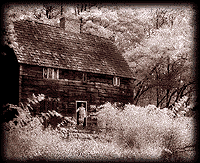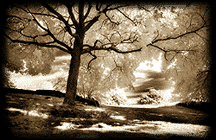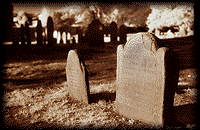Prologue
“Be sober, be vigilant; because your adversary the devil, as a roaring lion, walketh about, seeking whom he may devour.”
—1 Peter 5:8

Zealously obedient to this admonishment from the apostle Peter, the Puritans of New England scoured their souls—and those of their neighbors—for even the faintest stains. These stern, godly folk were ready to stare down that roaring lion till Judgment Day saw him vanquished.
But while the good people of Salem had their eyes on eternity, the lion walked softly among them during the 1670s and 1680s. Salem was divided into a prosperous town—second only to Boston—and a farming village. The two bickered again and again. The villagers, in turn, were split into factions that fiercely debated whether to seek ecclesiastical and political independence from the town.

In 1689 the villagers won the right to establish their own church and chose the Reverend Samuel Parris, a former merchant, as their minister. His rigid ways and seemingly boundless demands for compensation—including personal title to the village parsonage—increased the friction. Many villagers vowed to drive Parris out, and they stopped contributing to his salary in October 1691.
Seeking release from the tension choking their family, Parris’s nine-year-old daughter, Betty, and her cousin Abigail Williams delighted in the mesmerizing tales spun by Tituba, a slave from Barbados. The girls invited several friends to share this delicious, forbidden diversion. Tituba’s audience listened intently as she talked of telling the future.

The lion roared in February 1692. Betty Parris began having “fitts” that defied all explanation. So did Abigail Williams and the girls’ friend Ann Putnam. Doctors and ministers watched in horror as the girls contorted themselves, cowered under chairs, and shouted nonsense. The girls’ agonies “could not possibly be Dissembled,” declared the Reverend Cotton Mather, one of the brightest stars in the Massachusetts firmament.
Lacking a natural explanation, the Puritans turned to the supernatural—the girls were bewitched. Prodded by Parris and others, they named their tormentors: a disheveled beggar named Sarah Good, the elderly Sarah Osburn, and Tituba herself. Each woman was something of a misfit. Osburn claimed innocence. Good did likewise but fingered Osburn. Tituba, recollection refreshed by Parris’s lash, confessed—and then some.

“The devil came to me and bid me serve him,” she reported in March 1692. Villagers sat spellbound as Tituba spoke of black dogs, red cats, yellow birds, and a white-haired man who bade her sign the devil’s book. There were several undiscovered witches, she said, and they yearned to destroy the Puritans. Finding witches became a crusade—not only for Salem but all Massachusetts. Before long the crusade turned into a convulsion, and the witch-hunters ultimately proved far more deadly than their prey.